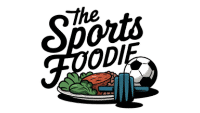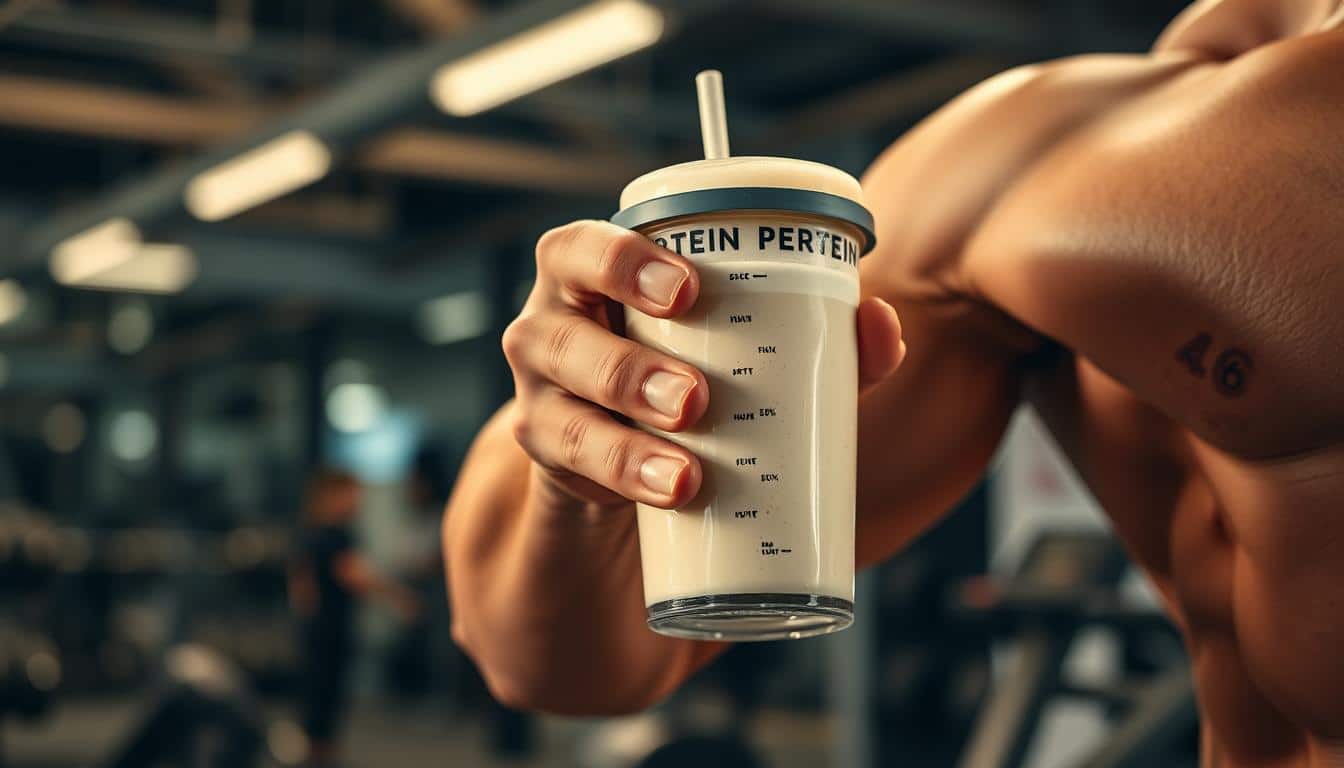Timing your meals around exercise can feel confusing. Should you focus on eating right before your workout, or does it even matter? The truth is, total daily intake plays a bigger role than when you eat.
Research shows that fueling your body consistently throughout the day supports muscle repair and performance. Whether you’re hitting the gym or going for a run, what you eat overall matters more than timing alone.
So, instead of stressing about pre-workout shakes, focus on meeting your daily goals. You’ll learn how to optimize your routine for better results and find what works best for your schedule.
Why Protein Matters for Your Workout
Your body’s needs change depending on how active you are. For those who exercise regularly, getting enough of this essential nutrient is crucial. It helps repair and build muscle, ensuring your body stays strong and healthy.
Think of it as the building material for your muscle repair. When you work out, tiny tears occur in your muscle fibers. This nutrient steps in to fix them, promoting growth and strength.

| Activity Level | Protein Needs (per pound of body weight) |
|---|---|
| Sedentary | 0.36g |
| Active | 0.72g |
For example, a 150-pound person needs at least 109g daily if they’re active. This ensures their body has enough fuel to recover and perform at its best.
Regular intake also supports faster recovery, increased endurance, and better body composition. It even helps preserve lean mass during endurance training. Plus, it plays a role in enzyme production and oxygen transport, keeping your body functioning smoothly.
Without enough of this nutrient, athletes may face slower recovery and reduced performance. So, focus on meeting your daily goals to stay at the top of your game.
Protein Before Cardio: What the Research Says
Research has debunked many myths about when to fuel your body for exercise. One of the most debated topics is the so-called anabolic window. This term refers to the time after a workout when your body is supposedly primed to absorb nutrients for muscle repair and growth.
For years, people believed this window lasted only 30 minutes. However, recent studies show it’s much wider—lasting up to 4-6 hours. A 10-week study found no significant difference in results between those who consumed nutrients immediately after exercise and those who waited a few hours.

In a 21-man study, participants saw identical improvements in muscle protein synthesis whether they ate before or after their workout. This suggests that precise timing isn’t as critical as once thought. Instead, focusing on your total daily protein intake is far more important.
For endurance athletes, combining carbs with protein can help replenish glycogen stores faster. The International Society Sports Nutrition (ISSN) supports this approach, especially after high-intensity sessions. However, for moderate workouts, the timing of your meals becomes less crucial.
As sports dietitian Jane Doe puts it, “Fuel when you’re hungry, not by rigid rules.” This practical advice emphasizes flexibility over strict schedules. Whether you’re doing resistance training or cardio, the key is consistency in your overall nutrition.
In short, don’t stress about the clock. Focus on meeting your daily needs, and your body will thank you.
How Much Protein Do You Need?
Figuring out the right amount to fuel your body doesn’t have to be complicated. Start by calculating your daily needs using this simple formula: Your weight in pounds x 0.72 = daily grams. For example, a 150-pound athlete needs about 108 grams daily.
To make it easier, here’s a quick guide to common foods and their grams protein content:
| Food | Protein (grams) |
|---|---|
| Chicken Breast (6 oz) | 40g |
| Greek Yogurt (1 cup) | 20g |
| Eggs (2 large) | 12g |
Your activity level also plays a role. Endurance athletes may need slightly less than strength athletes, but both benefit from spreading their intake across 3-4 meals every 3-4 hours. This keeps your muscles fed and supports recovery.
Can you eat too much? While your body can’t use more than 40g per meal efficiently, studies show higher protein intake supports bone health and body composition. Just focus on balanced meals and avoid overloading at once.
Signs of inadequate intake include slow recovery, muscle loss, and fatigue. If you’re unsure, consult a registered dietitian for a personalized plan. Tracking your intake with a food scale or hand measurements can also help you stay on track.
Best Sources of Protein for Cardio
Choosing the right fuel for your workouts can make a big difference. Whether you’re running, cycling, or hitting the gym, the foods you eat play a key role in your performance and recovery. Let’s explore the best options to keep you energized and strong.
Whole Foods vs. Supplements
When it comes to fueling your body, real food should always come first. Whole foods like eggs, salmon, and Greek yogurt provide essential nutrients and amino acids that support your training. They’re also more satisfying and nutrient-dense compared to supplements.
However, protein shakes can be a convenient option when you’re on the go or need a quick post-workout boost. They’re especially helpful for meeting daily goals when whole meals aren’t practical.
Top Cardio-Friendly Foods
Here are five excellent sources to include in your diet:
- Eggs: Packed with high-quality amino acids and easy to prepare.
- Salmon: Rich in omega-3s, which support heart health and recovery.
- Greek Yogurt: A great source of calcium and probiotics for gut health.
- Chicken Breast: Lean and versatile, perfect for post-workout meals.
- Quinoa: A plant-based option that’s high in fiber and nutrients.
Protein Powders and Vegan Options
If you prefer supplements, whey is a popular choice for its quick absorption. Casein, on the other hand, digests slowly, making it ideal for nighttime recovery. For plant-based options, blends like pea and rice protein provide a complete amino acid profile.
Here’s a simple shake recipe to try: blend 1 banana, 1 tbsp peanut butter, 1 scoop whey protein, and 1 cup almond milk. It’s quick, delicious, and perfect for refueling after a workout.
Cost Comparison and Safety Tips
While protein shakes can be cost-effective, whole foods like chicken breast often provide more value per serving. Be cautious of flavored powders with added sugars, and always opt for NSF-certified brands to ensure safety and quality.
For more insights on the best protein shakes, check out this complete guide.
In summary, focus on whole foods first, but don’t shy away from supplements when needed. The key is to find what works best for your lifestyle and training goals.
Timing Your Protein Intake
Getting the most out of your workout starts with smart timing. When you eat can impact your energy levels, performance, and recovery. Let’s break down the best strategies for fueling your body before and after exercise.
Pre-Workout vs. Post-Workout Protein
Your body needs different nutrients depending on when you eat. Before exercise, focus on carbohydrates for quick energy and a small amount of nutrient-rich foods. Afterward, prioritize recovery with a mix of carbohydrates and nutrient-dense options.
Here’s a simple guide to help you plan your meals:
| Time Before/After Workout | What to Eat |
|---|---|
| 3-4 hours before | Full meal (e.g., grilled chicken with rice) |
| 1-2 hours before | Light snack (e.g., banana with peanut butter) |
| Within 2 hours after | Post-workout meal (e.g., Greek yogurt with berries) |
For morning workouts, try a quick smoothie or rice cakes with almond butter. If you’re exercising in the afternoon, a balanced lunch with lean meat and veggies works well.
Liquid foods like smoothies digest faster than solid meals. This makes them ideal for pre-workout energy. For post-workout, aim for a mix of carbohydrates and nutrient-rich foods to replenish glycogen stores.
Hydration is also key. Drink 16 ounces of water 2 hours before your workout. This ensures your body stays fueled and hydrated.
For HIIT sessions, focus on quick-digesting snacks. Steady-state cardio allows for more flexibility in timing. If you prefer fasted cardio, a small nutrient dose can prevent muscle breakdown.
Supplements like BCAAs can be helpful during workouts, while whey is great for post-workout recovery. Avoid high-fat meals before exercise, as they can slow digestion.
Rushed mornings? Keep emergency options like protein bars or boiled eggs on hand. These ensure you’re fueled even when time is tight.
By planning your meals and snacks around your workouts, you’ll maximize your energy and recovery. It’s all about finding what works best for your schedule and goals.
Conclusion
When it comes to fueling your body for exercise, simplicity is key. Remember, your daily total intake matters more than perfect timing. Focus on consistency, and you’ll see better results over time.
Here are three actionable tips to get started: track your intake, space your meals evenly, and stay hydrated. Pairing your meals with carbs ensures you have the energy you need for your workout.
Don’t be afraid to experiment. Try different approaches to find what works best for your body and schedule. As one athlete put it, “Fuel smart, train hard, recover faster.”
For more guidance, check out our protein calculator tool or explore our next article on the best carb sources for endurance. There’s no single right answer—flexibility is your friend.
Now, go crush your next workout!


